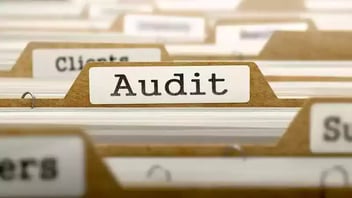Elevate your content with HubSpot Marketing Hub for content marketing. Discover how our strategies and HubSpot's tools drive success.
Why Remove Outdated Content? Grow Your Traffic – More With Less!
Should you remove content from your website and Google search results? Absolutely. Does that mean removing the entire blog post, or should it be rewritten and updated? That depends on several factors. Ask yourself these questions as you identify content you feel could be deleted.
Why Does Removing Outdated Content Matter?
-
40% of all website content is outdated. (Source: HubSpot)
-
Outdated content can hurt your website's ranking in search engines. (Source: Google)
-
Outdated content on your site can confuse and frustrate your visitors. (Source: Neil Patel)
-
Outdated content can damage your brand reputation. (Source: Moz)
-
Outdated content can be a security risk. (Source: Cloudflare)
Businesses rely heavily on their websites to attract and engage customers. Outdated information on the website can be a turn-off for customers and make them lose trust in the business. Updating the website with the latest information, products, or services helps to keep customers informed, improve SEO rankings, and enhance the overall user experience.
Is the content valuable to your readers?
If it's useful, educational, or informational and is just outdated, keep it and update it. If it's old content, promotion, or simply lacking in real value, remove it.
Search engines use complex algorithms to determine the relevance and quality of website content. Outdated content may be considered less relevant and ranked lower in search engine results. This can make it harder for potential customers to find the website and decrease its visibility and traffic.
Outdated content can make a website appear unprofessional and unreliable. Visitors, not just Google's crawlers, may question the business's expertise or trustworthiness if they find outdated information on the website. "How do you rank on AOL with your business?" Unless you're running a site for the Guinness Book of Blunders, outdated content can also be confusing or misleading, resulting in a poor user experience and competing with yourself in SEO through keyword cannibalization. This can lead to high bounce rates and low engagement, which may result in lower conversion rates.
With our blog as an example, in addition to creating 3-4 new postings per week to cover content gaps and new developments, we are constantly updating dozens of older or poorly performing posts, fixing broken links, updating or adding facts, links, and more. Making or keeping content in line with your evolving business, maintaining good on-page SEO rankings, and shaping topical SEO relevance are critical. We're looking to update every one of our posts two or more times per year.
This has a direct impact on a business's bottom line. Lower search engine rankings, credibility issues, and poor user experience can contribute to decreased website traffic and conversions. This can result in fewer leads, fewer sales, and ultimately less revenue. The financial impact can be significant, especially for businesses that rely heavily on online sales or lead generation.
Methods for determining which content on a website is outdated
There are a few different ways to identify outdated content on a website. One method is to manually review the website's pages and posts, looking for no longer accurate or relevant information. Another method is to use analytics tools, such as Google Analytics and Google Search Console, to identify pages with low traffic, poor search rankings or click-through rates, or high bounce rates. These pages may be a sign that the content is outdated. Tools like SEMRush are of additional value when comparing your ratings in a competitive landscape.
Deciding which content you want to remove or update can be difficult. Should you remove the content from your website only? Is it okay to still appear in search results, or should you also remove outdated content from Google? How do you get your content removed from Google Search?
It's important to consider how your content strategy aligns with the business's goals and target audience. Outdated content no longer aligns with the business's current objectives or audience should be removed. However, content that still provides value and aligns with the business's goals should be updated to reflect the current information.
Does the page have backlinks?
Are there backlinks to the specific page you're thinking about deleting? Valid backlinks are critical to SEO success and are somewhat hard to find. So if the page in question has backlinks to it, keep it. But modify the content to be more current and valuable.
Does the page get traffic?
Check your analytics. If there is appreciable traffic, you might want to keep the page but repurpose or update it first.
If you have a page with no traffic, poor content, and lacking backlinks, delete it. Eventually, Google will notice it's gone and remove it from search results. But if someone lands on that page, they will get a 404 error. You should build a custom 404 page that helps the user find the content they were looking for when they landed on the page that no longer exists.
You can use a 301 redirect to delete a page that still gets some traffic, has backlinks, or still shows in search results.
Improve and Update your content?
Updating existing content can be a more efficient and cost-effective way to improve a website's performance than creating new content from scratch. When updating existing content, businesses should focus on correcting inaccuracies, adding new information, and optimizing for search engines.
Additionally, old content can be repurposed by turning them into videos, infographics, or other formats. This can help bring new life into the content and make it more engaging for the audience.
You can determine how often Google crawls your website in the Crawl section of Google Search Console. This way, you can track the results of the page's repurposing or the deletion of out-of-date or unredeemable old content.
You Might Also Like This Post:
Create Evergreen Content
Often, old and outdated content can be repurposed as evergreen content. This refers to content that has long-term value. It's a post or page readers can reference for years because the information there will still be relevant and valuable.
The content is directly related to the core topics of the website. It can include frequently asked questions, how-to tutorials, encyclopedic information, reference guides, and product reviews (be sure the products are still available and relevant!). Why is evergreen content important?
-
It provides lasting value that compounds the longer it's up.
-
Optimizing evergreen content pages for SEO can improve your search rankings, boost your online authority and drive more traffic to your website.
-
This content educates new customers, clients, and readers by addressing frequently asked questions and providing basic knowledge about your industry or business. They learn more about you, what you do, and what you sell.
-
When you publish quality content about topics relevant to your industry, you present your experience and influence in the field. This builds your authority while building trust with your audience.
-
By presenting detailed, in-depth, and informative content, you offer a resource for other sites, citing you as a resource, further enhancing your authority, stature, and credibility.
How do I create evergreen content?
Generate ideas to build a foundation of information your target audience will seek. Consider your topic, industry, and business.
-
-
Answer your audiences' FAQs.
-
Be informative for someone with absolutely no knowledge of your business or industry. Share with them what they should know.
-
Research, research, research.
-
Learn who your target market is, which will help you generate the most relevant content ideas.
-
-
Write for people. Start creating your content after you identify the most appropriate keywords and topics. Utilize the best practices on how to write content for a website.
-
-
Get to the point with direct verbiage.
-
Also, don't speak over your readers' heads. If they're confused, they'll leave your page.
-
-
Stay consistent in your brand voice and tone.
-
Informality is okay if you're true to your brand and not confusing.
-
-
Make your page readable by leaving enough white space.
-
Use bullets or other formatting devices to your advantage.
-
-
Optimize for search engines. After you finish creating your content, be sure to satisfy yourself the elements are in place to assist the search engines as they crawl your content and assign rankings.
-
-
Use keywords naturally throughout the content and stay clear of keyword stuffing.
-
Keywords work well in the page title, subheadings, meta description, and tags.
-
-
Add links, both inbound and outbound.
-
Cross-link other blog posts or relevant information from your website, and link to relevant sources or helpful external websites.
-
-
Include a keyword in your Title, H1-tags, meta description, and URL to improve SEO rankings and click-through rates.
-
More ways to repurpose content
You now have evergreen content. Here are some ways to further repurpose content for a higher return on your marketing investment.
After creating several blog posts or articles on closely related subjects, you can make minor edits and updates and create a timely ebook. You can sell it on your website or offer a promotional giveaway in exchange for newsletter signup.
If you have interviewed industry experts, you can use the audio files to create a podcast for your followers.
Create an infographic based on either a blog post or an article. Infographics combine text with design to convey a story. They are easily digestible, and their visual appeal has made them a popular content form. They are more interesting to read than a text-based post. Isolate the text's main points and hire a designer or use a tool like Piktochart to create your infographics.
Offer videos and related blog posts on the same webpage to allow people to choose their preferred format. This is an excellent way to reach a broader audience using the same content.
Key metrics to track before and after removing or updating content
Analytics tools such as Google Analytics can provide valuable insights into how website changes impact traffic and user engagement. Businesses can better understand how those changes impact their website's performance by tracking key metrics such as page views, bounce rate, and conversion rate before and after content changes. Additionally, monitoring the audience demographics and behavior can help to understand how the changes impact different audience segments. Here are some core metrics to look at when measuring the quality of your content:
-
Website traffic: Track overall website traffic and the traffic to specific pages to measure the impact of content changes on how many people visit the website.
-
Bounce rate: The bounce rate is the percentage of visitors leaving a website after viewing only one page. A high bounce rate can indicate that the content is irrelevant or engaging to the visitors.
-
Conversion rate: Track the conversion rate on specific pages to measure the impact of content changes on the website's ability to generate leads or sales.
-
Time on page: monitor the time spent on a page; a shorter time on the page may indicate that the content is not engaging, or the page may be too heavy to load.
-
Audience behavior: Track the audience behavior, such as returning users, new users, and demographics; this can help identify changes in audience engagement or interest.
By optimizing historical posts, we're looking at doubling the traffic and leads they generate. If you can't or don't want to update the content, content removal can be a valuable and effective tactic in your content marketing arsenal.
Search engines like Google will regularly crawl your pages and update search results per the changed content on your website, i.e., typically, there is no need to request Google to recrawl or request Google to remove a page.
If you are trying to remove outdated content from search results, you CAN manually request the removal of outdated content in Google Search.
Here are the steps to remove outdated content from Google's search results on a permanent or temporary basis with Google Search Console's removal tool:
-
Log in to your Google Search Console account. If you don't have one, create a free account.
-
Select the correct search console property.
-
Under "Indexing," locate "Removals" on the left side of your portal.
-
Navigate to "Temporary Removals" to temporarily remove URLs from Google or "Outdated Content" for outdated page removal.
-
With the "Remove Outdated Content Tool," submit your content removal request to remove the URL from search results. While removing pages from search results might take some time, you can monitor submitted requests and eventually remove content from Google Search results.
By optimizing your older content and trimming those posts that are simply not producing AND can't be updated appropriately, you can improve overall performance, generate new leads, and retain your positions as a trusted advisor to your audience of readers.
This content is also available in:
- German: Warum veraltete Inhalte entfernen? Steigern Sie Ihren Traffic!
- Spanish: ¿Eliminar contenido obsoleto? ¡Más tráfico con menos!
- French: Pourquoi supprimer du contenu obsolète? Boostez votre trafic!
- Italian: Rimuovi i contenuti obsoleti e aumenta il traffico: di più con meno
- Romanian: Eliminați conținutul vechi și creșteți traficul: mai mult cu mai puțin
- Chinese: 为什么删除过时内容? 提升网站流量 - 少即是多!












Leave a Comment